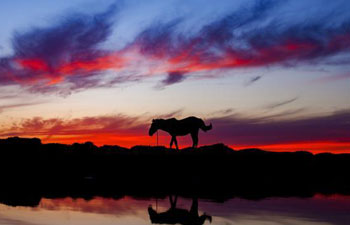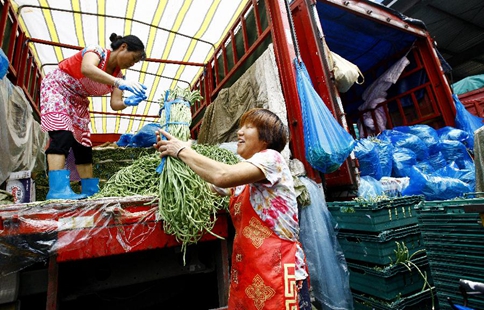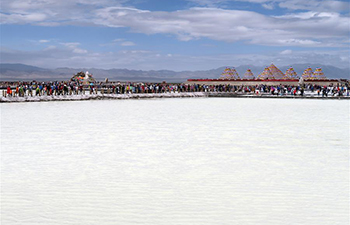By Sportswriters Zhang Yueshan and Wang Chunyan
HOHHOT, July 25 (Xinhua) -- "We, the Mongolians, could never live without our horses." That is how a horseman named Altanochir always responds when asked about his nation and his horse. His answer is the same as many other Mongolians likely would give.
The well-known horseman, living on Xilingol prairie in Inner Mongolian autonomous region, talks about the horses he rides with his eyes filled with tenderness.
Altanochir learned how to breed horses like his ancestors, and has led a well-off life ever since. He manages to earn an annual household income of more than one million yuan (approx. $148,000) with the around 400 horses that he owns. His revenue mainly comes from hosting horse races, domesticating horses, and modifying breeds. Altanochir also turned his farm into a tourist destination and his family even built a two-storey villa in 2015, decorated with Mongolian patterns on the exterior wall.
Altanochir's family used to be a traditional herdsman family. "Horses were just a means of transportation, but how can we use them to make money?" said Baatar. Altanochir's father firmly believed that getting rid of horses and increasing flocks would be the best way to become prosperous.
Baatar traded a camel and a horse for a second-hand motor bike in 1989. Five years later, he sold six horses and used the money to buy a new motor bike. With the money from this upgrading of vehicles, the old horseman bought the family's first four-wheel car. Now, this family of nine owns five cars.
However, the value of these horses decreased from 2.39 million to less than 0.7 million from 1975 to 2007, which shocked the government and the local people.
Trying to preserve the Mongolian horse culture and boost the local economy, the government has invested 18 million yuan to breed some 2,000 Mongolian horses each year since 2011. Meanwhile, the administration also organized various events involving sports, culture and tourism, building the horse as the symbol of Inner Mongolia.
"Horses are the soul of Inner Mongolian prairie culture," said Manglai, the deputy headmaster of the Inner Mongolia Agricultural University. "Mongolian horses have remarkable advantages in the areas of endurance, cold resistance and vitality."
In 2006, with his father's support, Altanochir spent 35,000 yuan and traded 10 Mongolian horses for a ferghana horse. Raising a mixed-blood horse has become a new way of becoming wealthy, as mixed-blood horses inherit genetic advantages and thus command a higher price.
Huyag, 38, is from a low-income household in Xilinhot. Last March, he was at a stable to demonstrate traditional Mongolian equestrianism to tourists and amateur photographers. Thanks to his new job and above-average salary, Huyag has shrugged off poverty now.
The stories of Altanochir and Huyag are not isolated, but instead represent a common phenomenon among Inner Mongolians. In Xilingol League, horse races and beautiful prairies have become a famous exotic destination for tourists and photographers from all over the country.
Horsing benefits many herdsmen in another way: through horse milk, known as koumiss. For example, a Mongolian herdsman named Menghe earns more than 400,000 yuan annually by selling koumiss and hosting other related activities.
Nowadays, Mongolian horses are given the opportunity to perform both on grasslands and on stage. Plays such as "Ode to Mongolian Horse," "Forever Genghis Khan," and "The Mongolian Horse," allow audiences to immerse themselves in the charm of Mongolian horses from a new perspective.
Over the past ten years, thanks to the efforts of the government and people, the number of horses in Inner-Mongolia has increased by 18,000. Alongside this increase, the living standard of average Mongolians in the region has improved as well.
Altanochir owns more than seven saddles at home, with the smallest one prepared for his eight-month-old son, decorated with silver.
"We Mongolians will always be on the horseback, without exception. So will my son, I will teach him to how to ride when he's older, maybe two years from now," promised Altanochir.

















